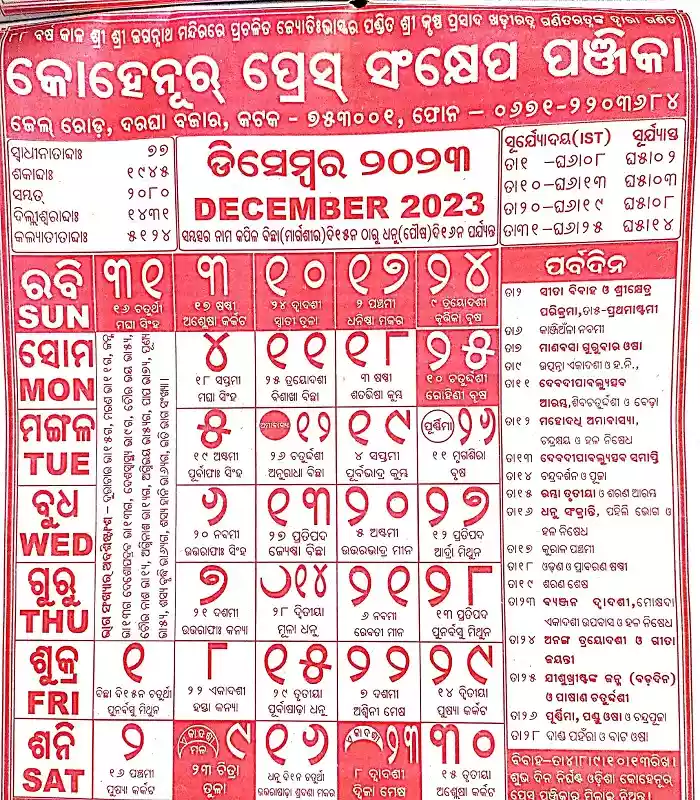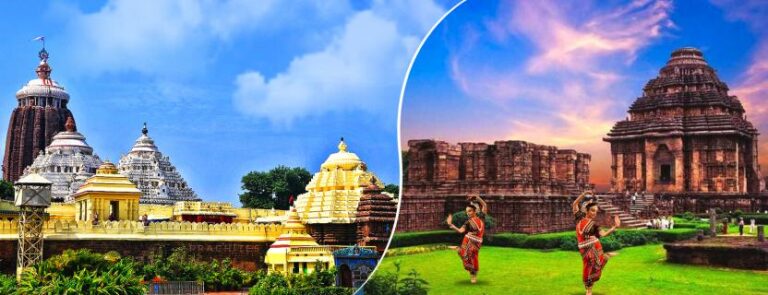Odia Calendar-Odia Panjika or Odia Panchang 2023
The Odia calendar, also known as the Odia Panjika or Odia Panchang, is a traditional calendar followed in the Indian state of Odisha. It is based on the lunar system and incorporates Hindu religious and cultural events. The Odia calendar is widely used by the people of Odisha to determine auspicious dates for various ceremonies, festivals, and rituals.

The months in the Odia calendar
The Odia calendar consists of twelve months and follows the lunisolar system, which means that it considers both the lunar phases and the solar movements. The months in the Odia calendar are as follows:
- Baisakha (April – May)
- Jyestha (May – June)
- Ashadha (June – July)
- Sravana (July – August)
- Bhadraba (August – September)
- Aswina (September – October)
- Kartika (October – November)
- Margasira (November – December)
- Pausa (December – January)
- Magha (January – February)
- Phalguna (February – March)
- Chaitra (March – April)
The days of the week in the Odia calendar
Each month in the Odia calendar begins with the Shukla Paksha (waxing phase of the moon) and ends with the Purnima (full moon) or Amavasya (new moon). The days of the week in the Odia calendar are named after the celestial bodies:
- Somabar (Monday)
- Mangalabar (Tuesday)
- Budhabar (Wednesday)
- Gurubar (Thursday)
- Shukrabar (Friday)
- Shaniabar (Saturday)
- Ravibar (Sunday)
Importance of Odia Calendar
- Religious and Festival Significance: The Odia calendar is deeply rooted in the religious and cultural practices of Odisha. It provides information about important Hindu festivals, auspicious days, and religious observances. The calendar helps people plan and prepare for various religious ceremonies, such as Puja, Yagna, and other rituals associated with festivals like Durga Puja, Rath Yatra, Diwali, and many more.
- Lunar Calendar System: The Odia calendar follows a lunar calendar system, which is based on the cycles of the moon. It consists of various months (māsa) and follows the movement of the moon to determine the dates of festivals and other significant occasions. This lunar calendar system has been followed in Odisha for centuries and has a unique regional flavor.
- Agricultural Importance: Agriculture is a vital part of Odisha’s economy, and the Odia calendar plays a crucial role in guiding agricultural activities. It provides information about the best times for sowing seeds, planting crops, harvesting, and other agricultural practices. The calendar helps farmers align their agricultural activities with favorable celestial positions, seasonal changes, and weather patterns, maximizing their chances of a successful harvest.
- Astrological Significance: The Odia calendar also includes astrological information and provides insights into various planetary positions, zodiac signs, and celestial events. It helps individuals interested in astrology to determine auspicious times for various activities such as marriages, housewarming ceremonies, business ventures, and other important life events. The calendar serves as a guide for making astrologically informed decisions.
- Cultural Heritage and Identity: The Odia calendar is an integral part of Odisha’s cultural heritage and identity. It reflects the rich traditions, customs, and beliefs of the Odia people. The calendar preserves and passes down knowledge from generation to generation, maintaining a strong connection with the past. It helps in fostering a sense of unity and shared values among the Odia community.
In conclusion, the Odia calendar holds immense importance in the lives of Odia people, encompassing religious, agricultural, astrological, and cultural aspects. It serves as a valuable tool for planning festivals, rituals, agricultural activities, and personal events while maintaining a deep connection to Odisha’s cultural heritage.
Odia Calendar 2023
January-2023

February-2023
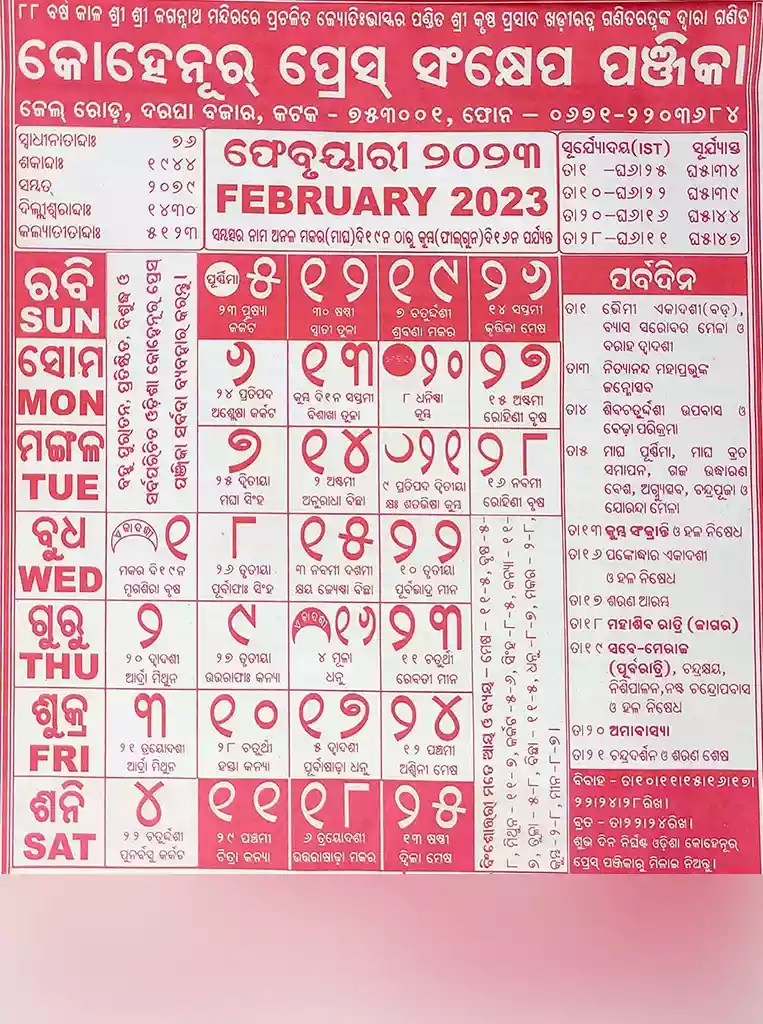
March-2023
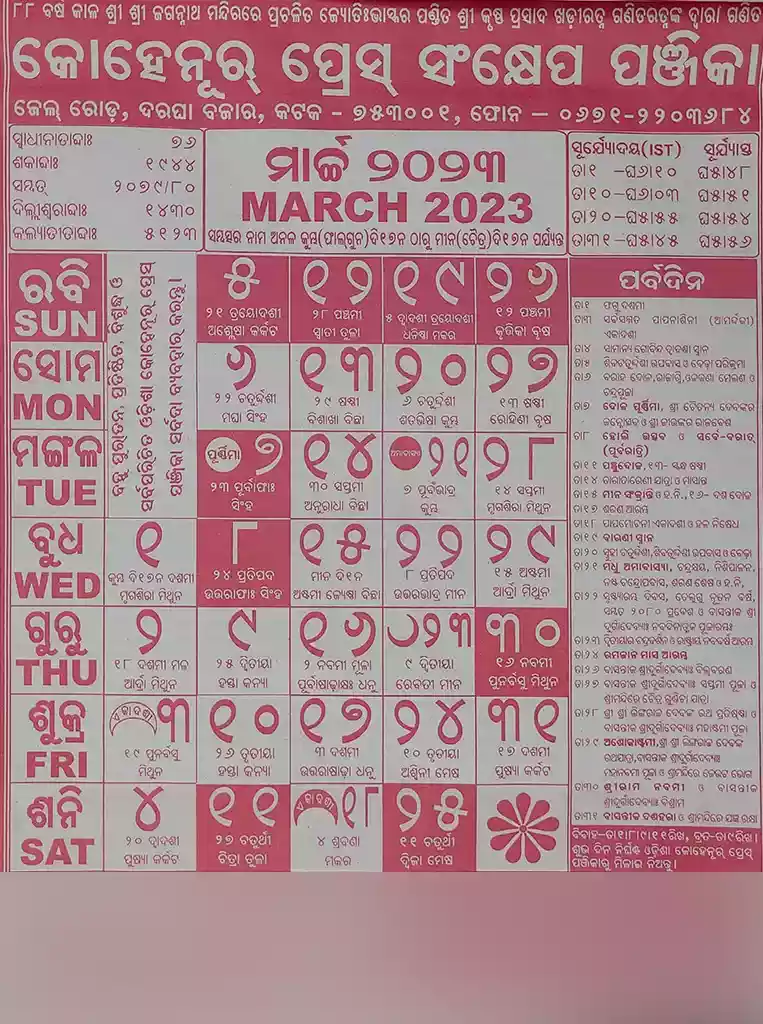
April-2023
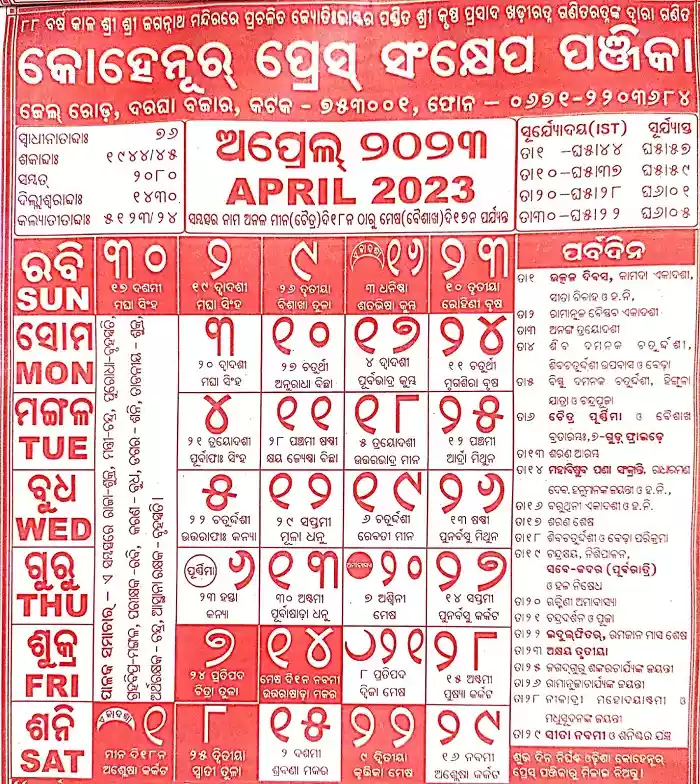
May-2023

June-2023
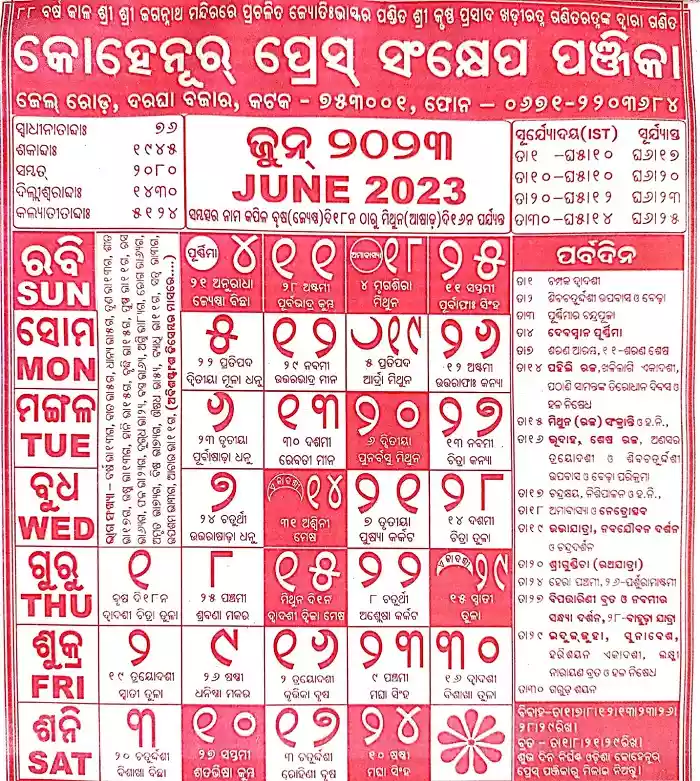
July-2023
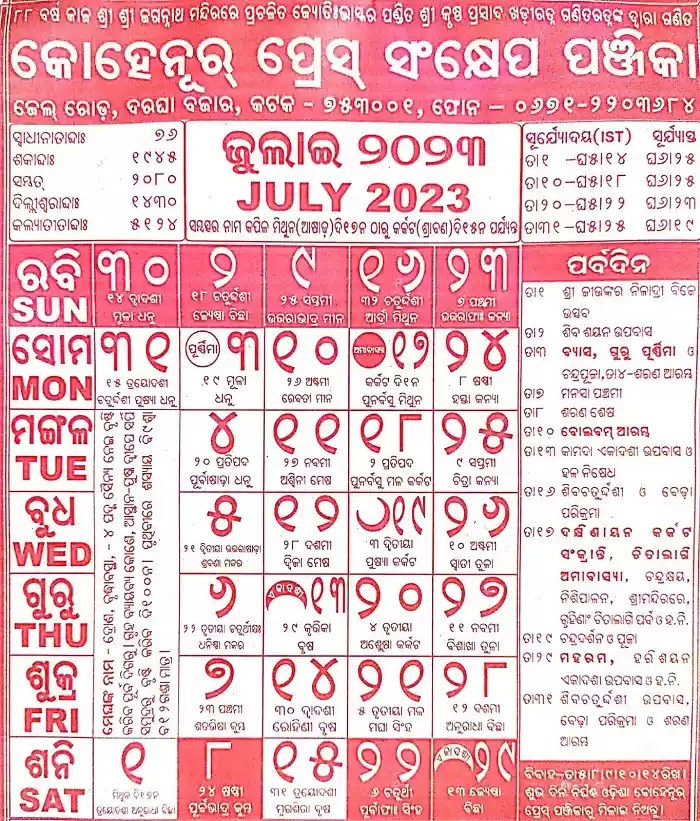
August-2023
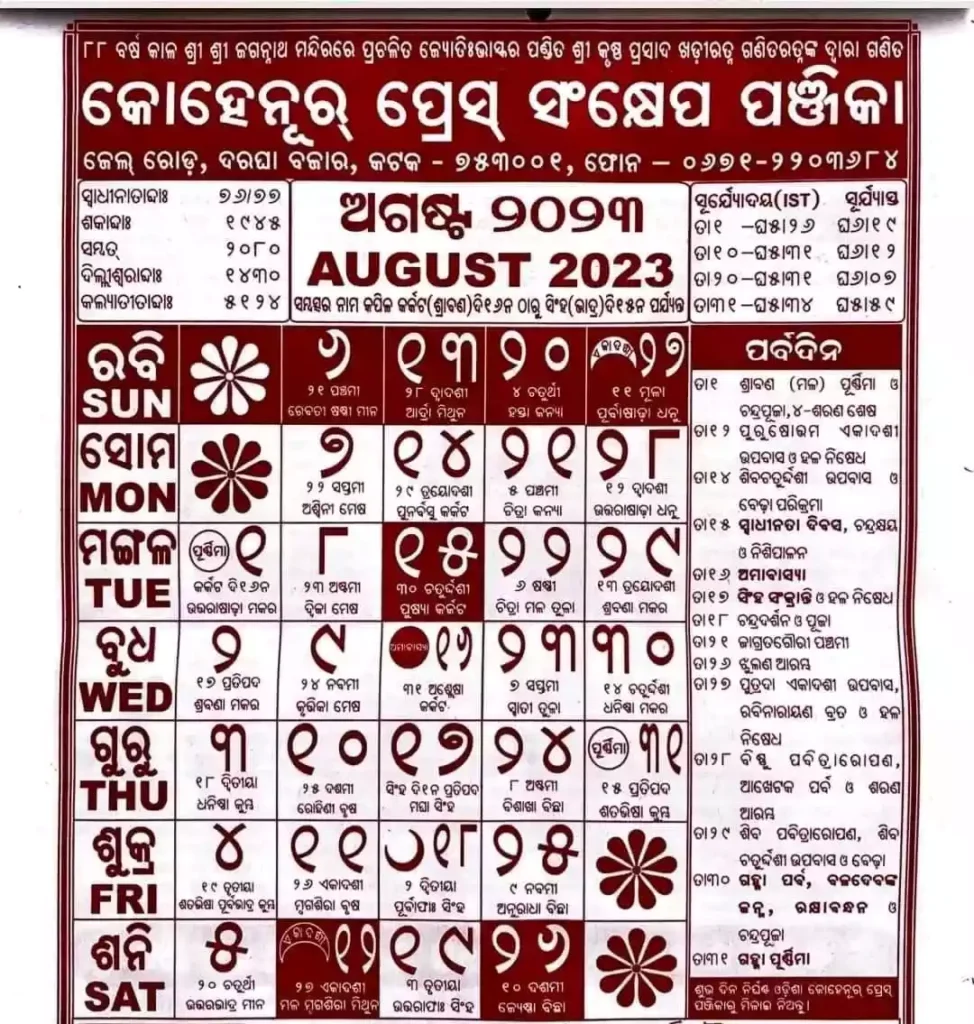
September-2023
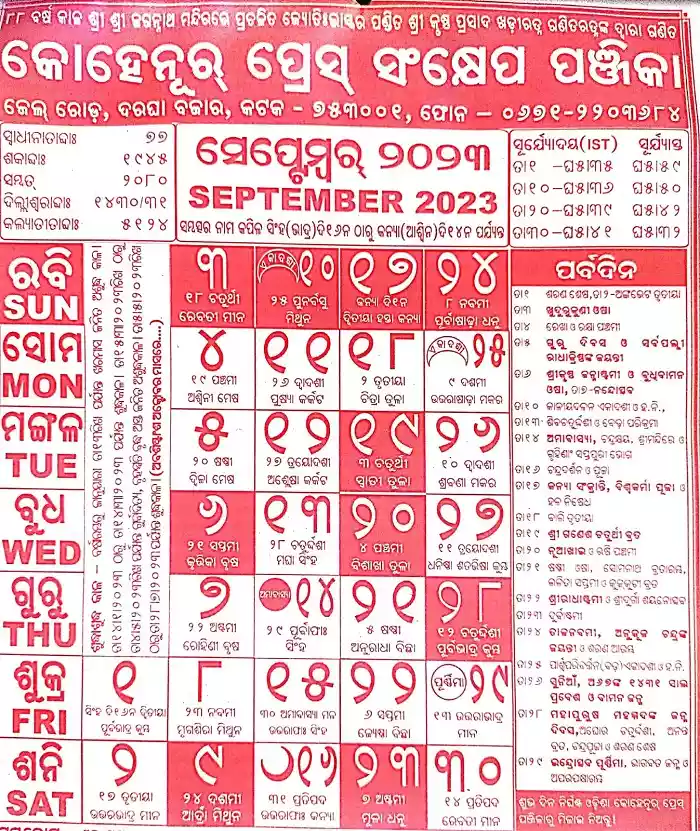
October-2023
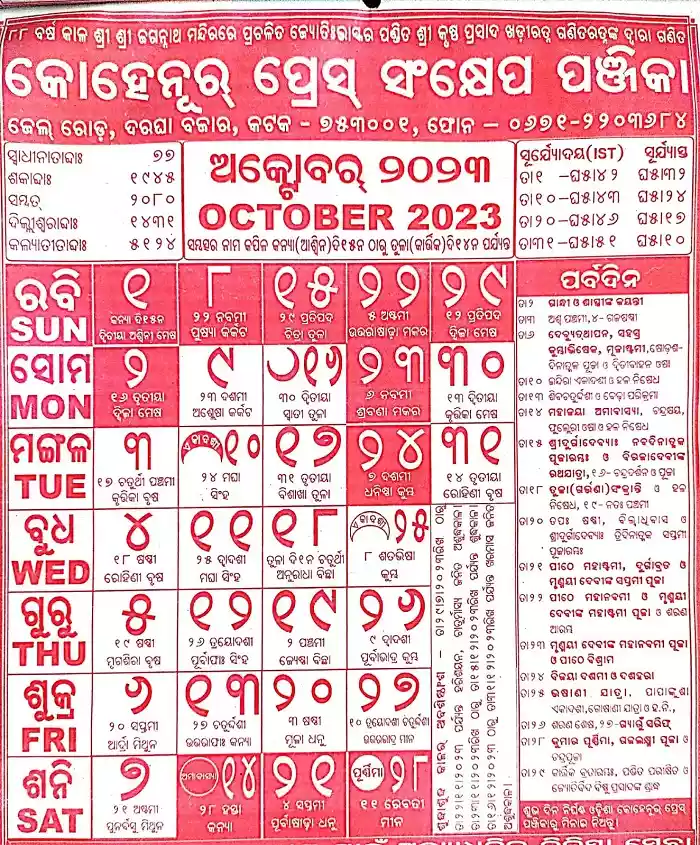
November-2023
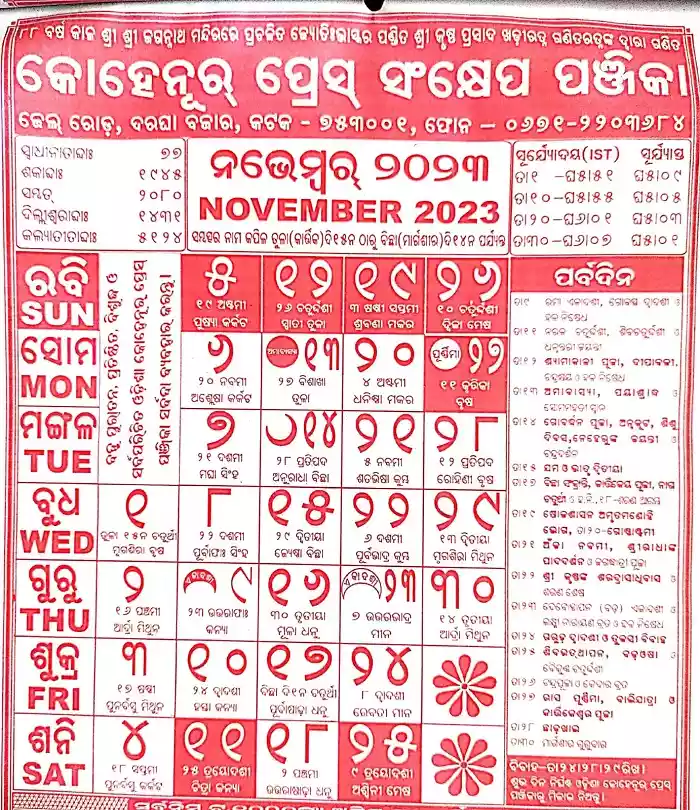
December-2023
